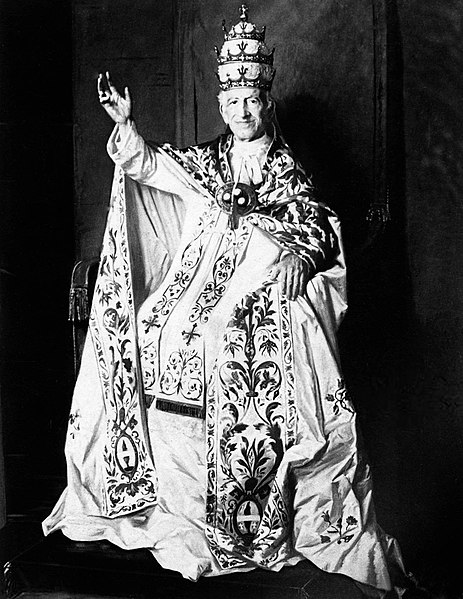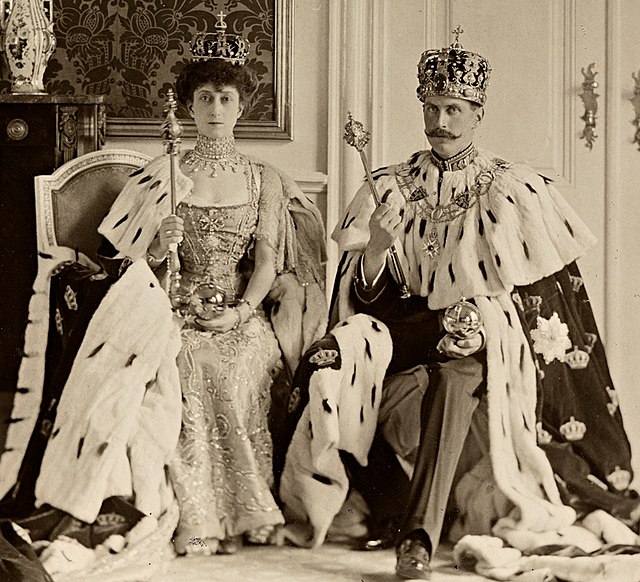Papal regalia and insignia
Papal regalia and insignia are the official items of attire and decoration proper to the Pope in his capacity as the visible head of the Catholic Church and sovereign of the Vatican City State.
Pope Pius XII in papal regalia including the triregnum, falda and the mantum, while being carried on the sedia gestatoria and flanked by the flabellum
Pope Benedict XVI in papal vestments: The mitre, pallium, fanon, and the chasuble
Pope Leo XIII in papal regalia: The triregnum, falda, mantum, and the stole.
Pope Pius X (left) wearing the papal vestments at the episcopal consecration of Giacomo della Chiesa (later Benedict XV)
Regalia is the set of emblems, symbols, or paraphernalia indicative of royal status, as well as rights, prerogatives and privileges enjoyed by a sovereign, regardless of title. The word originally referred to the elaborate formal dress and accessories of a sovereign, but now it also refers to any type of elaborate formal dress. The word stems from the Latin substantivation of the adjective regalis, "regal", itself from rex, "king". It is sometimes used in the singular, regale.
Queen Elizabeth II with her regalia
King Haakon VII and Queen Maud of Norway with their regalia in 1906
King Oscar II of Sweden, his crown prince Gustaf (V) and grandson Gustaf (VI) Adolf in their crowns and coronets on a state occasion about 1900.
Emperor Pedro II of Brazil wearing elements of the Imperial Regalia. Detail from a 1872 portrait by Pedro Américo.








